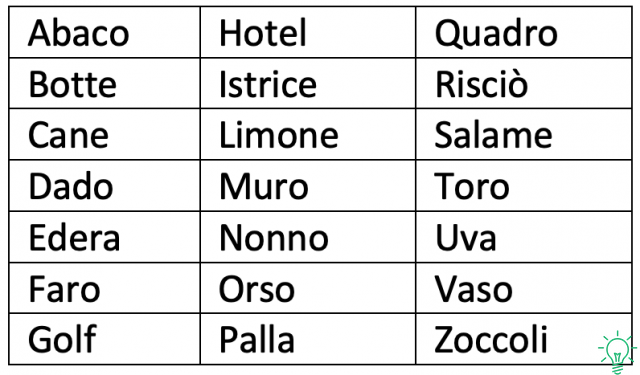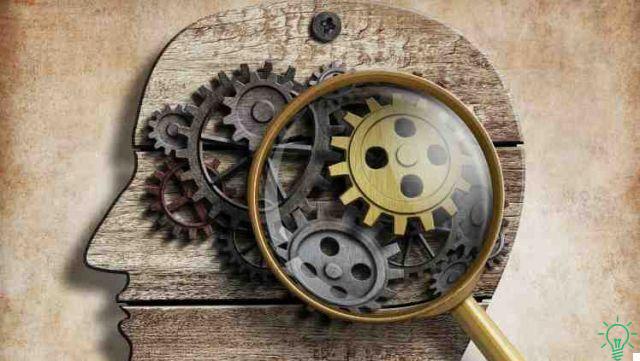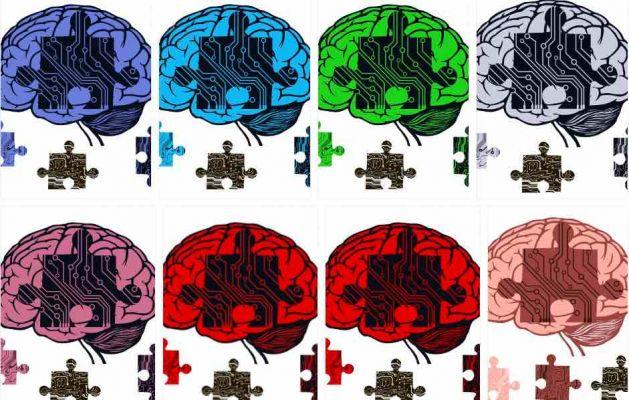
In this very long article I will show you how to store legal / administrative data such as regulations, decrees, laws or others of this kind.
Furthermore, you can also apply this same method to any written text that you need to remember.
The idea for the article was given to me by Sara, a reader who is preparing a competition to become an administrative assistant and who asked me for a little help.
As a type of memorization, that of legal data I believe is one of the most useful and widespread: it applies not only to law students, but to all those who, for various reasons, have to memorize codes, laws, regulations.
This is data that is difficult to remember for various reasons:
- It is important the precision in words. As we will see in today's example, verbs such as deliberate, determine, approve, authorize have different shades of meaning. Remembering one word instead of another, in law, can sometimes make all the difference in the world
- The lyrics are long, articulate, wordy, often poorly written. Legal / administrative jargon, as we know, is inherently tiring. Then, as often happens, it is written in a hurry and badly, here we find ourselves studying real syntactic cacophonies
- They require some logical and imaginative effort. For example, hardly any of us have ever been on the board of directors of a university, and today we will have to memorize its functions instead. If you think about it, it's a bit like memorizing the functions of a washing machine without ever having used one, without knowing how it is made, without having a precise idea of what it is for.
- They often contain (but this is not the case today), a second order of data to remember, as numbers (e.g. those of the articles of the codes) or references to other laws / decrees / regulations etc etc. Thus a sometimes very challenging system of Chinese boxes is formed to follow
In order to store legal data, therefore, a solid logical approach: understand, elaborate, reflect, notice similarities and differences etc.
If you then complement it with mnemonics, you can significantly reduce the time you will have to devote to studying.
Let's see how to do it, starting from the theme that Sara proposed to me
Will be:
Hi Anthony,
I have been following your blog for a long time and I too would like to ask you for help with regards to memorization. I am studying for a competition for an administrative assistant position and as a program we have the University Statute, the Gelmini Reform law and various regulations. In this regard, I wanted to ask you for advice on how you would memorize, for example, a fairly long list of the functions of an important body such as the Board of Directors that I will paste you below.
The Board of Directors, in particular:
a) approves, on the proposal of the Rector, and with the opinion of the Academic Senate, the annual and three-year budget and final balance sheets of the University and the consolidated balance sheet;
b) approves, on the proposal of the Rector and after obtaining the opinion of the Academic Senate for the aspects within its competence, the University three-year planning document, the strategic direction, the annual and three-year financial planning, the annual and three-year staff planning;
c) manages the movable and real estate assets and supervises their conservation;
d) determines, after hearing the opinion of the Academic Senate, the contributions to be paid by the students and any and all economic treatment in favor of the students themselves, which is the responsibility of the University Central Administration;
e) determines the financial resources to be allocated to the Central Administration structures and to the centers with autonomous management powers, in compliance with the rules contained in the Regulations and on the basis of the criteria determined by the Academic Senate;
f) determines, with the favorable opinion of the Academic Senate, the division between the Departments of financial resources for research and teaching and the budget for teaching staff;
g) decides, after obtaining the favorable opinion of the Academic Senate, the allocation of posts for teaching staff;
h) decides, with the favorable opinion of the Academic Senate, the distribution among the Schools of the financial resources for the maintenance of the premises, as well as the acquisition and maintenance of the equipment necessary for teaching;
i) identifies the management control criteria, within the limits referred to in paragraph 1, of the Central Administration and of the University as a whole;
l) expresses a mandatory and binding opinion on the amendments to the Statute and on the regulations on teaching and research, including those pertaining to the Departments and Schools;
m) supervises the financial sustainability of the University's activities;
n) authorizes, if this involves expenses for the central university budget, agreements and conventions with universities and public or private bodies, national and foreign, already approved by the Academic Senate, as well as contracts for research and consultancy activities;
o) deliberates, after obtaining the opinion of the Academic Senate, the establishment and modification of the central and peripheral structures of the University;
p) confers, on the Rector's proposal, the office of General Manager;
q) approves the call proposals;
r) decides on disciplinary sanctions relating to professors and researchers;
s) establishes the criteria and the amount of the indemnity for all the offices for which the indemnity is provided for by law or by this Statute, making them public in compliance with the provisions of the law on
transparency in public administrations;
t) approves the University Regulations for Administration, Finance and Accounting, according to the procedure indicated by the laws in force;
u) transmits the annual, three-year budget and final balance to the Ministry responsible for the University and the Ministry of Economy and Finance;
v) deliberates on the proposals of the Academic Senate pursuant to art. 50, paragraph 2, of this Statute;
z) exercises all the other functions and powers provided for by the legislation in force, by the Articles of Association and by the Regulations.
How would you proceed? Many thanks in advance! Will be
How to store this data list?
Certainly not easy memorization: 21 functions, alphabetically ordered, which present many of the problems that I pointed out in the introduction: verbosity, presence of details, conceptualization difficulties.
Let's take it step by step.
First, since it is a list, it could be use a memory palace to remember it in the exact order.
You can learn more about the palace of memory at this link.
Here, I am content to remind you of the basic principle: you have to link a short-term memorization (the various functions of the CDA) to things already present in your long-term memory (the loci of the memory building).
However, since the list follows an alphabetic notation from A to Z, it is even easier to use the latter through:
- The international naval alphabet (it is one of the "archives of loci" that I always recommend to learn by heart)
- Or a path of 21 images, one for each letter of the alphabet, built by you.
We use this second possibility, not because it is absolutely the best, but because it seems to me useful for didactic purposes.
You have to form 21 pictures that represent 21 words, each starting with a different letter of the alphabet.
Do it quickly, choosing the first image that comes to mind that seems easy to visualize and remember.
Then, spend about 5 minutes going over the list, calmly analyzing each image in detail.
Use the visualization rules we saw in the article remember by images:
- Be specific (if for example you imagine a dog, it doesn't have to be just any one, but one you know well).
- Notice the shape, the color, the tactile sensation that the image gives you
- Zoom in on the details
- Interact with the image
The reason for using these rules is the same as for the memory palace: associate new notions with long-term memory.
Here are the 21 words / images I chose:

At this point, let's move on to the actual study.
We start by finding, for each point of the regulation, a essential element which represents its main argument.
This essential element is then transformed into an image that represents it.
And finally, this image - which constitutes the short-term memory data - is associated with the corresponding image previously created, the one already present in your long-term memory.
The goal of this first step is not to store the entire text, but only the main argument of each function.
In the second phase instead, we will see how to add all the rest of the information.
But let's see an example, starting from the function identified by letter a)
"Approves, on the proposal of the Rector, and with the opinion of the Academic Senate, the annual and three-year budget and final balance sheets of the University and the consolidated balance sheet"
In my opinion, the specific topic to be selected for this sentence are budgets.
Then build an image that you remember: for example a beautiful scale on whose plates are placed some books full of numbers, the budgets in fact.
Note that in this case both the scales and the books remind me of the topic: it is one redundancy which is excellent for memory, but which is not always easy to do.
It fixes in the memory the image of the scale with the books, giving it details, enlarging it, zooming it, using if possible objects that are in turn part of your long-term memory.
That is, not a generic balance, but one you know, not generic balance sheets, but balance sheets you know.
Of course this will not always be possible! Whenever you can, however, use images of real things, which are part of your memories.
At this point all that remains is to create the connection between the image that represents the letter a), that is the Abacus, and the Libra with books.
For example, place the scale on top of the abacus, hovering, almost as if it were about to fall. Fix your attention on the line of contact between the two elements, imagine it all as vividly as possible.
And here you can finally move on to the next point.
But first, let's see for a moment how long it took me to make this first association:
- It took me about 15 seconds to read the sentence, ponder it and decide what balances were the main element.
- To create a good image of "budgets" I put in 10
- To create the association between Abaco and Bilanci I put in 5
- To review the whole image seeing it in detail in my mind I put another 10
In short, about forty seconds in all.
I would therefore say that, for each point, an acceptable time to do this first phase of memorization is between 30 seconds and one minute, depending on the difficulty.
Note among other things that, in order to "distill" the central element of each sentence, you have to make a first effort to understand and elaborate the text, which will contribute to memorization.
But let's proceed article by article.
Basic display of each of the 21 points
Here are my choices, already coupled with the respective alphabetic element. For some of them, in my opinion the most significant, I will give you explanations.
Abacus: Budgets -> balance with large books full of numbers on its plates
Boot: Programming -> inside the barrel is Alessandro, my friend the programmer
dog: Heritage -> my dog Bart (remember, choose not generic but specific images as much as possible) enters his kennel, which is overflowing with money, jewels, shares.
Nut: Student Honors and Burdens -> the die is rolled by a student. Half of the faces make it win (honors) half make it lose (burdens). This memorization, less direct than the previous ones, seems to me useful to explain. The text speaks of "economic treatment" and "contributory treatment", ie taxes to be paid and disbursements in favor. I have transformed these two concepts into "honors and burdens", which is a commonly used expression much easier to visualize at first. And which I then rendered with the trick of the faces of the nut.
Ivy: Financial resources for central administration and centers with autonomy -> here the image is a bit complicated, and reflects the mental effort that is necessary to understand what is being memorized. Effort which, among other things, will help you memorize. In this case, we are talking about financial resources to the central body and to the autonomous peripheral bodies. I then decided, to remember it, to create an allegory with the nervous system, also composed of a central body (the brain) and peripheral bodies, some under its complete control, others autonomous. The central nervous system is powered by the bloodstream, which represents financial resources in my metaphor. Here then is that the metaphor not only helps me to remember the main content of this function, but also to understand and conceptualize it. Being a doctor then, it is very easy for me to imagine, drawn on the ivy leaf, a beautiful image of our nervous system.
Faro: Financial resources for teaching and research -> the lighthouse illuminates a microscope (research) and a blackboard (teaching) immersed in banknotes
Golf: Seat assignment -> I hit a golf ball resting on a placeholder.
Hotel: Maintenance -> I arrive at my favorite hotel (the Hotel D'Europe in Avignon) and it is closed for maintenance.
Porcupine: management control -> the control tower of the airport is full of porcupines (image so-so, they do not always come out well. But you have to know how to be satisfied, you will remember it when you go over it again, perhaps precisely because it is an image that has not really come out well ).
Lemon: changes in statute and regulations -> again we are faced with a rather complicated mental creation. As you may know, with lemon juice you can write invisibly, and then make the words appear by heating the sheet of paper. So I imagine the Albertine Statute which, once heated, covers itself with important changes written with invisible ink. (Note: the Statuto Albertino is the statute of the Savoy family, promulgated in 1848. In almost every city there is a piazza Statuto. it is not a constitution but a statute)
Wall: financial sustainability -> the association is easy here. The house wall is supported by a column made from 50 euro bills (maybe!).
Nonno: agreements and conventions -> my grandfather shakes hands with unknown people
Bear: establishes and modifies central and peripheral structures -> a bear sitting at the PC first connects all the peripherals (microphone, webcam, printer, speakers) and then exchanges them. In this case I decided, since the image came to my mind like this, to suggest already in the image the verbs “establish and modify”.
Palla: general manager -> a ball hits anything in the face that reminds you of the general manager (I imagine the megadirector of the Fantozzi mega-firm). Easy Come Easy Go. Note that hitting in the face is not derogatory to the poor director, but is a typical ploy of memory techniques: imagine vivid, memorable events. And therefore a ball in the face is, for example, much better than a simple "play ball"
Quadro: Call proposals -> here of course you must first understand what you are talking about. The call proposals refer (I believe) to the recruitment of university professors. To remember this then, imagine a painting you know well (the Mona Lisa) calling out to one of your professors
Rickshaw: Disciplinary sanctions -> I hit the fourth official UEFA referee with a rickshaw. In this case the image I found is really easy to remember, but going from referee to "disciplinary sanctions" can cost you a bit of effort, depending on your familiarity with football jargon.
Salame: Indemnity (it is a type of pay) -> cut the salami and find inside the pay slip, which details the various allowances (travel, accompaniment, etc.).
Bull: Rules of Administration, Finance and Accounting -> Here you have to draw on your personal experience. Any company has an administration, finance and accounting office. Imagine two thorium horns out of it, on which a condominium regulation hangs.
Grapes: Transmits the balance -> an antenna in the shape of a balance comes out of the grapes. Again, as in the point "bear", I used an image that contains the idea of the verb. That is an antenna to transmit. The reason is that "budgets" was already in point a) so having them again on your own was a problem. Also, an antenna to "transmit" came really spontaneous to me.
Glass: art 50 -> in this case the phonetic conversion must be used (which if you study legal subject you have to learn by force) to transform the number into an image. The number 50, represented with the phonetic conversion, corresponds to LaSie the dog. So, in the Vase my mother gave me is the dog LaSsie (they actually have different sizes, but no problem: a medium-sized dog in a 20-centimeter vase is something vivid, easily remembered)
Plinth: All other functions and skills -> It is the Italy match against "Rest of the World" (all other functions and skills) and the players of the rest of the world have clogs at the foot (overall image not very effective, but patience) .
Now that we have finished this first phase, let's see how we are doing some tests
Control and review of the first storage phase
Let's say for example that I want to know what it's about:
- Point F: I easily remember that f corresponds to Faro. The Lighthouse illuminates a microscope and a blackboard immersed in money… it shouldn't be difficult at this point to remember that the article is about funding for research and teaching. Did you not succeed or did you only partially succeed? No problem, mentally review the whole association: from the letter to the alphabetic image; from the alphabetic image to the mental association with a microscope, blackboards and money; from the latter to the concept it represents. You will see that, once you have gone through it, you will have consolidated it well.
- Point B: corresponds to barrel. Mhhhh there is something in the barrel, right? Indeed, someone. A programmer. At this point we talk about programming, we will then see what.
- Point G: golf -> the ball is on a placeholder. Here we talk about seat allocation
- Point D: die -> the student who throws the die with half good and half bad sides -> fees and honors -> student fees and funding
- Point N - my grandfather shaking hands -> agreements and conventions
But we also do some tests on the contrary, which is more difficult.
Where do we talk about the general manager? Mhhh….
He's the one who gets the ball in the face, so I point P.
And of the financing to central and autonomous peripheral bodies? So, I remember the allegory of the nervous system, and here I see it represented on an ivy leaf. Point E.
It's the dog? Where was the dog? In his kennel he exploded with money, stocks, and jewels. A real heritage.
There's another dog somewhere too, right? Yes, it is Lassie, who is inside a Vase and represents, in the phonetic conversion, the art.50.
And the balance? I find it twice: hovering on the abacus in point a), and on top of an antenna that comes out of a grape in point u). On the other hand, the financial statements, once approved (which is what we talk about in point a) must then be transmitted to someone, as we say in point u)
In short, if you have worked well you should:
- Understand and memorize the main topic of each of the 21 CDA functions listed
- Being able to list them in any order and even when told a random alphabetic point
- Having assimilated various secondary information, thanks to the processing effort made to identify the main topic and create the corresponding images.
It may be that some images here and there are not entirely accurate (was Lassie or the programmer inside the jar? What exactly did the bear do? What did the Lighthouse illuminate besides the microscope?).
Or maybe you are unable to correctly reproduce a sentence starting from an image: for example, you may not be immediately able to go back from "charges and honors" to "contribution charges and salary".
However these are minor flaws and nuances that you will easily correct it later in the memorization.
Oh yes, because obviously we're not done here.
Second phase of memorization
The main argument, in most situations, is not enough for you to pass an exam.
Instead, you need to add a series of sub-elements.
Let's see how to do it, starting from the beginning of the list, i.e. from point a)
"Approves, on the proposal of the Rector, and with the opinion of the Academic Senate, the annual and three-year budget and final balance sheets of the University and the consolidated balance sheet"
You already have the image of the scale hovering on the abacus.
You must then use the segmentation technique to memorize the rest of the sentence.
In essence, it is a question of identifying details on the main image, usually 4 or 5: for example the base of the scale, the stem, the beginning of the arms, the chains of the plates, etc.
And then associate each of these details with an image that represents secondary information.
But without exaggerating. Many in fact, in a slavish manner, trying to transform every word into an image, as if they had to memorize a poem.
Not only does this actually consume a lot of time and energy, but it is not at all necessary to memorize information that usually has a fairly clear logic.
Remember that memory techniques are useful to remember more quickly data that, with simple repetition, find it difficult to enter the head.
But if these data derive in a logical and evident way from the main data, it is neither necessary nor efficient to use the techniques to remember them.
So let's think about this sentence.
Does the verb approve, must it be remembered with techniques? In my opinion not necessarily, it is all in all logical.
However, if one is not so familiar with the subject it may be worth doing. Like? Since in this list of points the verb approve is repeated several times, I would identify an image that represents it (e.g. an elegant pen, of those used to sign important documents) and I would use it every time the verb appears in this list.
The same goes for the Rector (the emperor Caesar) and the Academic Senate (the Roman Senate): they appear in several other points, so it is better to type them and associate them with the basic image each time they appear.
So, in this moment, you have your scale with the big books resting on the plates, and on which you have identified 4 sublocations.
In one, the base, you will put the beautiful pen, the one that represents the verb "approve"
In the second, on the stem, you will imagine the emperor Caesar hanging with the whole senate.
Here then you are already able to say "approve the budgets, at the proposal of the rector and the academic senate".
Great. But what budgets?
“Di Ateneo” seems really obvious to me: being the University's Board of Directors, it is naturally called upon to approve its own budget, not that of others. So it makes no sense to remember "from the university" with mnemonics.
“Estimate and final balance”: even here, in my opinion it is not worth creating mnemonic images. It is a common notion that a forecast balance is made, which contains forecasts, and a final balance sheet, which is what actually certifies how things went.
“Annual and triennial”: annual is obvious. Three-year, on the other hand, much less, because not everyone makes three-year budgets, and even those who make them multi-year do not necessarily have to make them 3 years. They could be 4 or 5 or 2. In short, the number 3 in my opinion must be remembered intentionally, with a technique. You could for example change the initial image of the scale, making it 3 plates instead of 2, which you remember very well.
But you can also proceed in a more classical way (and a little longer) by converting the 3 into the aMo image (phonetic conversion) and inserting the latter into one of the 5 sublocations of the scale.
“Consolidated” here of course you must first know what it is. The consolidated balance sheet is a summary balance sheet of all balance sheets. It might be worth remembering, perhaps imagining a console (assonance) in another locus of the scale. Or, even better, the books on the scales could all be bound together. Or finally, if you have a minimum of economics preparation, you can also take for granted the presence of a consolidated balance sheet, and therefore you do not need to intentionally remember it with an image.
In summary, therefore, if we did a reconnaissance of your mind, at this moment we should be able to see the image of an Abacus, hovering on which there is a three-plate scale, on which there are large books full of numbers bound together. , and on which you have focused two sublocations: the base, in which you see an elegant pen for writing, and the stem, from which an emperor with the whole senate hang.
Beyond that, there are a number of elements that are quite obvious and that you can remember naturally.
So, you are able with some ease to say:
Abacus -> point A)
Approves (menmotecnica), on the proposal of the rector and with the approval of the academic senate (mnemotecnica), the budgets (mnemotechnics - is the central element) budgets and final accounts (obvious), annual (obvious and three years (less obvious, I remember it with mnemotechnics) of the university (obvious, and from whom if not?) and the consolidated balance sheet (more or less obvious, you decide whether to memorize it with mnemonics or remember it as a deducible and logical data).
The interesting thing is that, while you decide what to remember with mnemonics and what not, the reasoning and choices you make to decide help you memorize themselves.
For example, I asked myself the difference between on the proposal (of the rector) and with the approval (of the academic senate): and I realized (here we return to the importance of linguistic subtleties in the law) that the rector has the responsibility to make the financial statements and bring them to the Senate and the Board of Directors for approval.
The two expressions "on proposal" and "with approval" therefore reflect different tasks and responsibilities: it is one thing to take care of having a document drawn up, another thing is to wait for them to bring it to you and express an opinion on it.
It is clear that, if you do not do this type of analysis and do not arrive at this type of understanding of the text, memorizing becomes very long and even a little unrealistic.
A bit like trying to memorize a poem, moreover in a language you don't know well.
I talked about this about the importance of context in Baker Baker's article on the paradox: the more you know, the easier it is to receive new information. The more you know, the less intentional memorization you need to do.
But when, on the other hand, you know little or nothing about a topic, you are trying to put the sentences in your head word by word.
Memorizing then becomes a real nightmare and there is no memory technique that can save you.
To explain me better, let's see the whole memorization process we did for the article a)
- text fragment analysis
- understanding and elaboration
- choice of an image / word that represents the main topic of the fragment
- identification of notions that can be connected in a natural and easy way to the main idea, which we call "consequent"
- identification of the most difficult notions to connect, and which we call "non-consequent"
- choice of words / images that help you remember non-consequent ones
- subloci segmentations of the main image
- association of "non-consequent" words / images to sublocations
The speed of this process depends a lot on what lies in the "consequent" category and what lies in the "non-consequent" category.
These are rarely objective definitions. Most of the time it depends on who is reading.
For example, when I read a medical text, I find a lot of consequent information: things that I remember in a natural way, because, having a degree in medicine, I place them in a very broad context of pre-acquired knowledge.
While when I read a legal / administrative text I find a lot of information that for me has little context, and therefore I have to build many more images to remember them.
For this advice,
- before starting the phase of memorizing new subjects, to read them all once and elaborate them well, otherwise you risk making an enormous effort to memorize things that, once you have a broader vision of the subject, you would remember easily .
- to clarify everything you don't know, so that you find yourself having to memorize empty words, but concepts you know. For example, do not try to memorize that a CDA must approve a budget if you have not at least got a somewhat clear idea of what a CDA is and what a Budget is. Don't memorize "chords and conventions" unless you first know the difference between these two terms. And so on.
But now, since there are never too many examples, let's briefly see point B) together.
As you will remember, the word barrel corresponds to it, and in the barrel there is my friend the programmer, Alessandro (having a specific person you know helps to remember and favors the possible segmentation into subloci).
b) approves, on the proposal of the Rector and after obtaining the opinion of the Academic Senate for the aspects within its competence, the University three-year planning document, the strategic direction, the annual and three-year financial planning, the annual and three-year staff planning;
"Approve" will be identified by the usual elegant pen, and will go into the first sublocus
"On the proposal of the Rector and subject to the opinion of the Academic Senate" will be identified by emperor and senate in the second sublocus
"For the aspects of its competence" seems to me an example of a poorly written legal text, just to complicate things a bit. It is in fact obvious that each one expresses himself on the aspects of his competence and not on those that do not belong to him. Anyway, I'd say you don't need mnemonics to remember it.
We now come to the question of programming, which is the fundamental element of the text.
There is:
- a programming document
- financial planning
- a staff schedule
So, in a sub-location, you have to put these three data, perhaps represented by a general, a financier, an HR manager.
The fact that there are 3 figures also helps you to remember that, as in point a), we are talking about both annual and triennial.
When strategically addressed, you will also turn it into an image (e.g. the back of an envelope with an address written on it) and insert it into a sublocus.
You must therefore identify, on your programmer, 4 sublocations to which to associate the 4 information. I leave it to you, it would make little sense to give you an example with my friend Alessandro whom you do not know.
After having identified them and having made the associations with the images, here we are able to act
approves (mnemotechnics), on the proposal of the rector and the academic senate (mnemotechnics) for the aspects within its competence (obvious), the three-year general planning (mnemotechnics), the annual and three-year financial and personnel planning, the strategic direction (mnemotechnics ).
Note that the sentence is very similar but not exactly the same as the original. This because it is not usually necessary to remember word for word.
If it were, you still have to make a little effort to move from "general planning" to a three-year university planning document.
It shouldn't be difficult.
You can do it with natural memory, remembering first that general three-year programming is not correct and should be specified better.
Then the expression “University three-year planning document” will come to mind by itself, having already seen it written a couple of times.
Or you can do it with mnemonics, replacing the image of the general (which I had chosen to have three people, which seemed easy to remember) with that of a document (for example the "envelope" representing the documents on the PC).
Again, logic will help you too.
In fact, once you know that we are talking about programming, it is natural to say “ok, but what about? And how long is the programming done "?
And answering "strategic, personal, financial and general" and then "for a year and for 3 years" is not that difficult to memorize, is it?
Conclusions
Now that we have completed this long example, let's try to answer Sara's question briefly, “How would you memorize a long list of information such as the functions of the University's Board of Directors”, summarizing what we have seen so far.
First phase
- Create a memory palace, or other type of image path, using your long-term memory (this step is only needed when things need to be remembered in order).
- For each textual fragment, identify the main idea through a first reading and text processing.
- As you read and process, try to resolve conceptual and meaning doubts as well, to create that knowledge of the essential context to long-term understanding and memorization. (eg look at what a budget is if you don't know. Think about the difference between approving and proposing. And so on)
- Associate the image representing the text fragment with the corresponding image on the previously created path
- Try doing a first repetition, you will need it to consolidate mental images and their associations. Also, if you already know the subject, natural memory will allow you to already remember several secondary details
- If, and only if, you need to know more details, move on to the second step of memorization.
Second phase
- Identify, in each fragment, everything that is obvious to you or easily remembered thanks to the main idea. The so-called "consequent" information. For their memorization you will rely on reasoning and repetition.
- It identifies, in each fragment, all the information that is difficult to remember, what I call "non-consequent". Then turn them into images, trying to use as little as possible
- Segment, on the main image of the fragment, as many sublocations as there are non-consequent information to remember.
- Associate one (or more) images of non-consequent information with each sublocus
- Repeat everything one more time
How long does it take to do all this work?
It depends on four things:
- What level of detail do you need to get: just the main idea is enough or do you have to know everything like a poem?
- How much do you already know the topic: this affects both the time you spend exploring concepts and meanings, and the amount of consequent information you are able to identify
- How confident are you in using memory techniques
- What kind of questions you will find in the exam: it is one thing to study to answer a question like "List ALL the functions of the CDA for me". It is quite another thing to have to study for a cross-check with questions such as “Who brings the budget proposal? The rector or the board of directors? ". It is clear that answering questions of the first kind requires a much more intense study.
For example, if you are an economics graduate who knows what a CDA is, you know memory techniques, you need to remember only the main concepts, and you prepare a cross-check test, studying this list shouldn't take you more than half an hour.
If, on the other hand, the topic is new to you, you use the techniques so-so, you have to remember even the smallest details, and you prepare an oral question with open questions, here you have to stay on this document for maybe even an hour and a half.
In any case, I can say with reasonable certainty that a good use of the techniques speeds you up a lot compared to traditional preparation.
Think if you had to remember even only the 21 main ideas with the only strategy of repetition: you would have to repeat them several times to memorize them all, and then you would have to review them very frequently in the following days, because you would have a very rapid memory decay.
With the techniques, on the other hand, you memorize them more quickly in the first place. And, above all, to keep the memory "fresh", you must then repeat them much less often.
It is the great advantage of images and the use of long-term memories.
In point M, for example, we talk about financial sustainability. How many times would you have had to repeat the list to remember it? And how many times should you repeat it in the future so as not to forget it?
Here instead, seeing the Wall of your house supported by a column made of money, remembering financial sustainability is much easier.
Before we finish, allow me one last consideration.
Memorizing all 21 points in detail took me 50 minutes, or 2 and a half minutes each. To write the procedure clearly and in order in this article, it took me more than 6 hours.
This tells you how much the verbalization is, compared to the images, something slow, cumbersome, imprecise.
Viewing two images and their association is a matter of seconds; describing them in words is instead long and tiring.
Memory techniques therefore appear convoluted only when you describe them; when you really use them instead, they are one of the most direct tools that exist.
And ultimately, 90% of the skill in using them lies in learning how to produce effective images.
A greeting and see you soon.

























